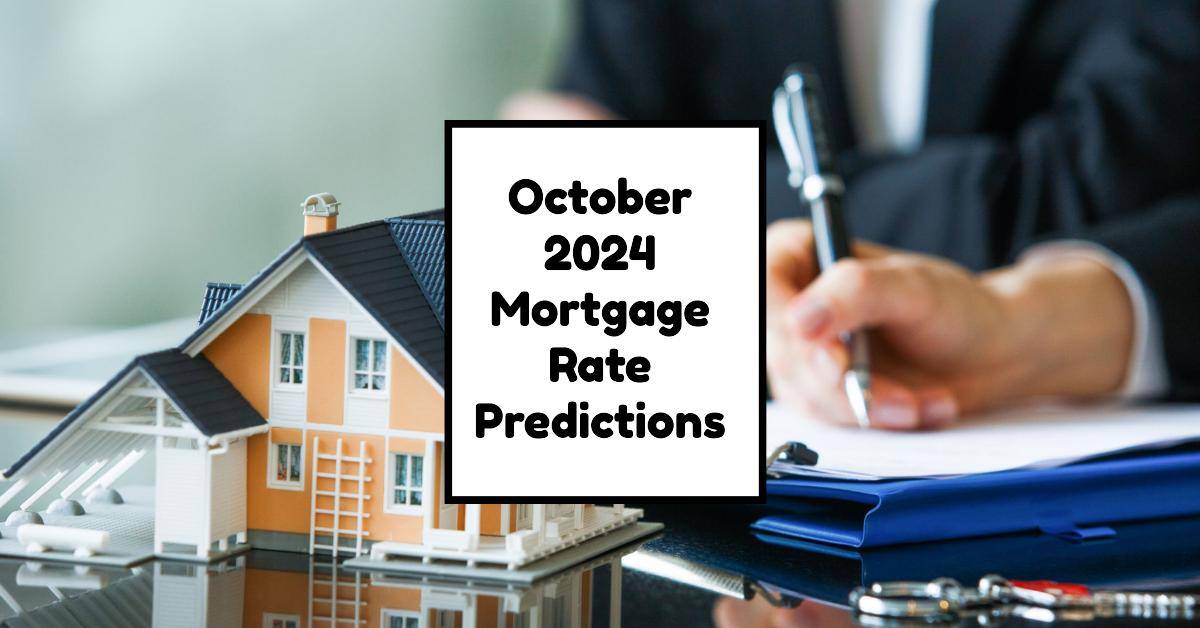"MORTGAGE RATES IN OCTOBER
2024: STABILITY AMID ECONOMIC UNCERTAINTY"
As of October 2024, mortgage rates are
maintaining a cautious equilibrium after months of fluctuations that kept
homebuyers and homeowners on edge. The average 30-year fixed mortgage rate sits
at about 6.13%, with predictions indicating that rates may hold within a range
of 6.2% to 6.5% throughout the month​. Several factors are contributing to this
stabilization, but the outlook for the coming months remains somewhat uncertain
due to economic variables and Federal Reserve policies.
Current
Mortgage Rate Landscape
The slight uptick in mortgage rates from
earlier in the year follows a period of sustained decline. Between May and
September 2024, mortgage rates dropped from a peak of 7.22% to just over 6%,
reflecting optimism as the Federal Reserve began signaling potential interest
rate cuts. However, the rates have now flattened, with the Federal Reserve’s
recent 50-basis-point reduction already priced into the market. This means that
although the Fed may make further cuts by the end of the year, mortgage rates
are unlikely to fall dramatically in the short term​.
KEY FACTORS
AFFECTING MORTGAGE RATES
Federal
Reserve Policies: The central bank's actions have
a profound impact on mortgage rates. In September 2024, the Federal Reserve
announced a significant rate cut, which had already been factored into the
mortgage market. While there is potential for further cuts, Federal Reserve
Chairman Jerome Powell emphasized a "meeting by meeting" approach,
keeping the market in suspense. If inflation cools or unemployment spikes, the
Fed might lower rates further, which could lead to a decline in mortgage rates.
Conversely, if inflation remains sticky, or if the economy continues to expand
robustly, rates could rise or hold steady at current levels​.
Economic
Data and Inflation: The relationship between
inflation and mortgage rates is central to understanding the housing market’s
future. Lenders generally raise rates when inflation is high to protect their
returns, and inflation has been a persistent concern throughout 2024. The
September Consumer Price Index (CPI) showed only modest progress in reducing
inflation, which is why lenders are keeping rates above 6% for now. Should
inflation decline meaningfully, we could see mortgage rates drop further​.
Housing
Market Dynamics: The supply and demand within the
housing market are also key determinants of mortgage rates. Currently, there is
a mix of strong buyer demand and constrained housing supply, which supports
higher rates. Rising home prices, driven by limited inventory, have kept the
market competitive, meaning lenders have little incentive to significantly
reduce rates at this stage. However, if the housing supply improves or buyer
demand cools, mortgage rates may ease slightly​.
Investor
Sentiment: Another critical element influencing
mortgage rates is investor confidence in the broader economy. When investors
are optimistic about the economy's health, they may move capital into
higher-yield investments, putting downward pressure on mortgage rates. But when
uncertainty abounds—due to geopolitical issues, global economic risks, or
unexpected shocks to the economy—mortgage rates can rise as lenders adjust to
perceived risks in the market.
FORECASTS
AND PREDICTIONS FOR 2024
Experts from institutions like Fannie Mae and
the Mortgage Bankers Association forecast that mortgage rates may continue to
decline slightly by the end of the year but not by much. They predict that the
rates will hover around 6.2% in the final months of 2024, barring any
unforeseen economic shocks or changes in Federal Reserve policy​.
However, these predictions are tempered by a
note of caution. Many analysts believe that the trajectory of mortgage rates
will depend on how quickly inflation falls, whether the labor market cools, and
how global events, such as geopolitical tensions, play out. Mortgage rates are
also unlikely to wait for Federal Reserve action, as we saw in mid-2024 when
lenders preemptively adjusted rates ahead of Fed decision.
WHAT DOES
THIS MEAN FOR BORROWERS?
For potential homebuyers and those looking to
refinance, the current mortgage landscape presents a few opportunities:
Locking in
Rates: With rates still over 6%, some may want to lock in
a rate now, especially if they expect economic uncertainty or rate increases in
the future. Refinancing or purchasing a home with the expectation that rates
could rise again might push some to act sooner rather than later.
Waiting for
a Dip: Others may choose to wait for the potential rate
declines predicted by experts, especially if the Federal Reserve cuts rates
further by year's end. However, this approach carries some risk, as external
factors could also push rates upward unexpectedly.
While the mortgage rate situation has
stabilized for now, the market remains highly sensitive to shifts in economic
data, Federal Reserve decisions, and global events. Homebuyers and homeowners
should stay informed and flexible in their financial planning, as 2024 is
likely to bring further changes to mortgage rates as the year progresses.


